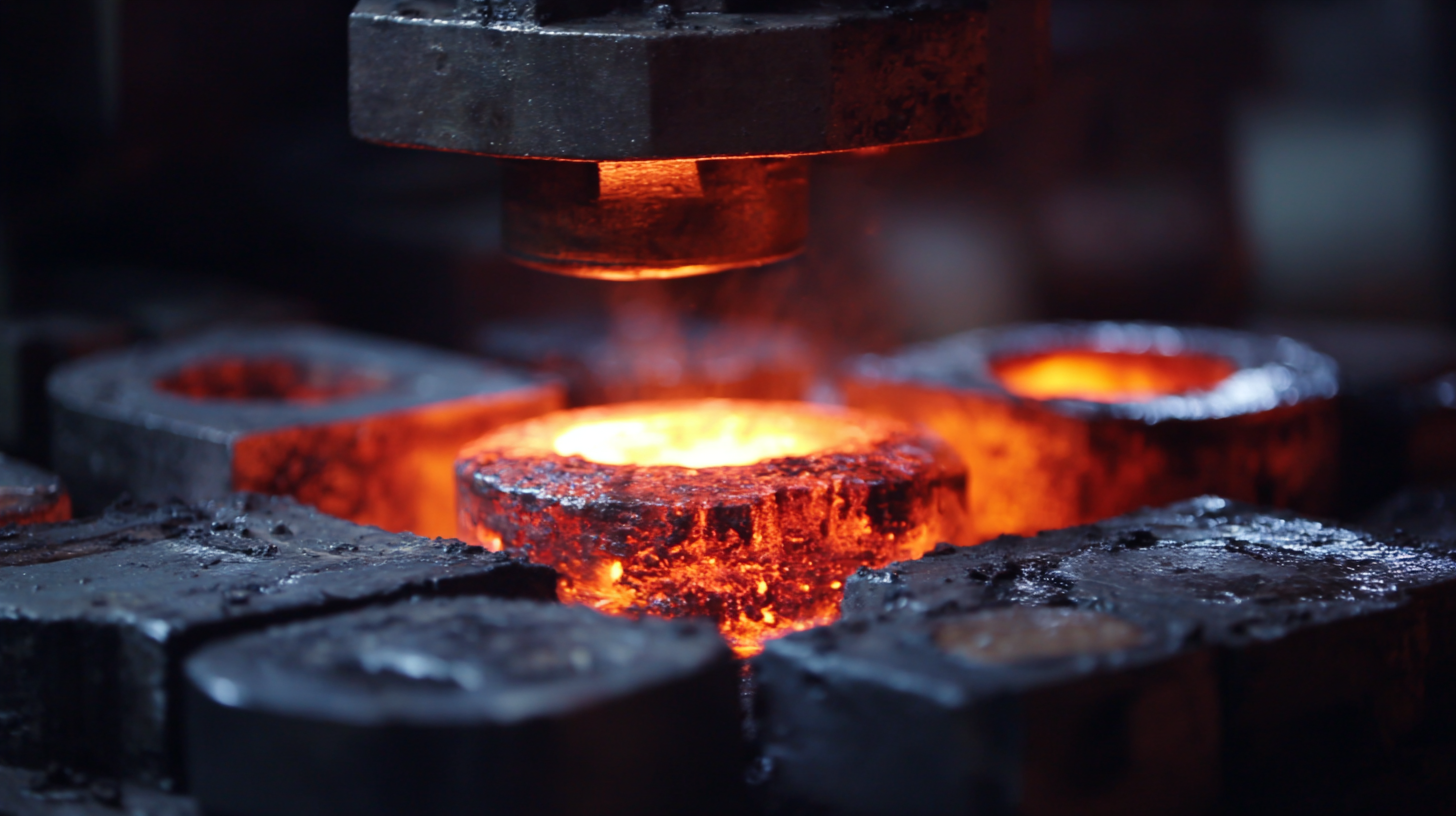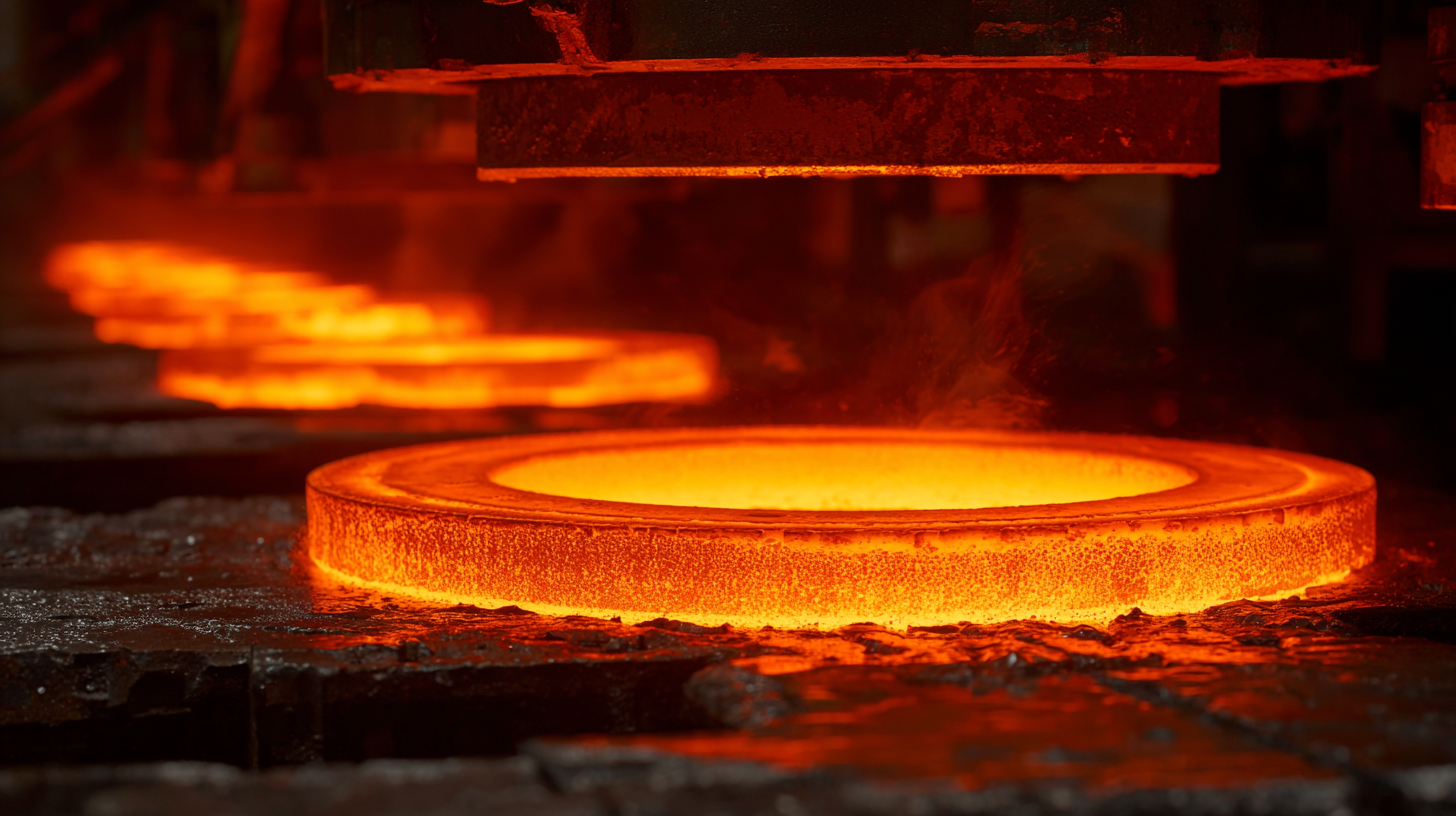Leave Your Message
In the ever-evolving landscape of metallurgy, the quest for innovation drives industries to explore and adopt advanced materials that enhance performance and sustainability. One such material that has garnered significant attention is Metallic Silicon. Renowned for its exceptional properties, Metallic Silicon serves as a crucial element in various applications, ranging from the production of high-purity silicon for electronics to its role in alloying processes in the aluminum industry.

This blog delves into the characteristics and benefits of different types of Metallic Silicon products, highlighting their suitability for specific applications and the innovations they bring to the metallurgical field. By understanding the unique attributes and versatile nature of Metallic Silicon, businesses can better forge the future of metallurgical innovation and optimize their production processes for greater efficiency and environmental responsibility.
Metallic silicon has emerged as a cornerstone in the landscape of metallurgical innovation, paving the way for advancements across various industries. As an essential material, it plays a critical role in the production of silicon-based alloys and semiconductors. The unique properties of metallic silicon, including its high melting point and electrical conductivity, make it indispensable for the development of lightweight, high-strength materials that are increasingly demanded in modern manufacturing processes.
In the context of metallurgical advances, metallic silicon not only enhances the performance of traditional materials but also fosters the creation of new applications. Its ability to improve the strength and corrosion resistance of metals is vital for industries ranging from aerospace to automotive. Furthermore, the advancement of green technologies emphasizes the importance of metallic silicon, as it can serve as a cleaner alternative in the production of energy-efficient materials.
This shift towards sustainability reflects the ongoing evolution in metallurgy, where innovations are essential for meeting both market needs and environmental responsibilities.
Metallic silicon, often overlooked in discussions about advanced materials, plays a pivotal role in metallurgical innovation. Its unique properties, such as high thermal and electrical conductivity, make it indispensable in various applications, including electronics and renewable energy systems. The versatility of metallic silicon allows it to be utilized in the production of high-purity materials, essential in semiconductors and photovoltaic cells, driving technological advancements across multiple industries.
Tip: When selecting metallic silicon for your projects, consider the purity level required for your specific application. Higher purity materials can significantly enhance performance and longevity, especially in semiconductor manufacturing.
The mechanical strength and corrosion resistance of metallic silicon are vital attributes that contribute to its desirability in construction and aerospace sectors. These qualities not only ensure durability but also improve the efficiency of processes, where metal alloys require superior performance under extreme conditions.
Tip: For optimal results, always test the compatibility of metallic silicon with other materials involved in your projects. This can prevent failures and ensure the integrity of the final product.
This bar chart illustrates the key properties of metallic silicon that make it an essential material in metallurgical innovation. Factors such as electrical conductivity, thermal conductivity, melting point, density, and purity are crucial in determining its application in various industrial processes.
The innovative applications of metallic silicon have gained significant traction across various industries, driven by advancements in technology and a growing emphasis on sustainability. The high purity silicon market is projected to experience remarkable growth, particularly in sectors such as semiconductors and solar cells, underlining the material's pivotal role in the future of technology. As industries increasingly lean towards lightweight composite structures, the integration of silicon-based materials is set to revolutionize product designs, offering enhanced performance and durability.
Tips for industries looking to harness the benefits of metallic silicon include investing in research and development to explore new applications that leverage its unique properties. Collaboration between manufacturers and technology developers can lead to the creation of innovative solutions, such as sustainable construction materials that utilize recycled silicon. Furthermore, businesses should stay informed about market trends and technological advancements, which will be crucial in capitalizing on the expanding opportunities within the high purity silicon market.
It is also essential for companies to adopt eco-friendly practices, like exploring CO2-free production methods for silicon. This approach not only addresses environmental concerns but may also open up new funding opportunities and enhance brand reputation. By aligning their strategies with sustainability goals, industries can forge a path towards a more innovative and responsible future.

When it comes to sourcing and utilizing quality metallic silicon, it is crucial to adopt best practices that ensure efficiency and sustainability. High-quality metallic silicon is a fundamental component in numerous industries, including electronics and renewable energy solutions. To begin with, companies should establish reliable relationships with reputable suppliers who adhere to stringent quality standards. This collaboration is vital, as it directly influences the final product outcomes and operational efficiency. Conducting thorough audits and maintaining open communication with suppliers can uncover potential issues early on, ultimately leading to better sourcing decisions.
In addition to choosing the right suppliers, businesses must also focus on optimizing their processes for utilizing metallic silicon. Implementing advanced technologies and techniques, such as precise melting and casting methods, can significantly enhance the material's performance. Moreover, investing in research and development to innovate recycling methods for metallic silicon can not only reduce waste but also lower production costs. By integrating these best practices, industries can forge a path toward a more efficient and sustainable future, driven by the power of quality metallic silicon.

The metallurgical innovation landscape is rapidly evolving, particularly with advancements in silicon technologies. As industries seek sustainable solutions, metallic silicon (MG-Si) is becoming a cornerstone for driving growth within the metallurgical sector. With the market projected to reach $1.0536 billion by 2033, maintaining a compound annual growth rate of 4.6% from its 2025 valuation of $659.8 million, the potential for innovation is vast. This exponential growth is encouraging investments in research and development, paving the way for greener alternatives and more efficient production methods.
Recent events, like the summit on low-carbon high-quality development in refractory materials, highlight a collective push towards leveraging technology for a sustainable future in metallurgy. Highlighted discussions on innovations reflect a burgeoning interest in minimizing environmental impact while maximizing product effectiveness. Furthermore, the ongoing dialogues surrounding the fluctuations in silicon prices reveal an industry that is not only adapting to market demands but also embracing transformational changes within the photovoltaic sector. This momentum points towards a future where metallurgical innovation, fortified by silicon technologies, plays a pivotal role in shaping sustainable practices across various industries.
| Innovation Area | Projected Growth (%) | Key Technologies | Impact on Industry |
|---|---|---|---|
| Silicon Carbide Semiconductor | 20% | Power Electronics | Higher Efficiency, Reduced Energy Loss |
| Silicon-Based Solar Cells | 15% | Photovoltaics | Cost Reduction, Increased Adoption of Renewable Energy |
| Metallic Silicon Alloys | 10% | Automotive and Aerospace Materials | Lightweight, Enhanced Durability |
| Silicon Nanostructures | 25% | Nanoelectronics | Miniaturization of Devices, Enhanced Performance |
| Silicon in Battery Technology | 30% | Energy Storage | Higher Capacity, Faster Charging |
